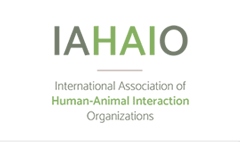Abstract
This article focuses on the practical aspects of converting a successful in-person AAA program to a virtual program in a health care setting including human, canine, and physical resources; animal welfare considerations; training, infection control, and safety guidelines; and visit delivery procedures. In 1992, an interdisciplinary team at Akron Children’s Hospital founded the Doggie Brigade, an animal-assisted activities (AAA) program where volunteer therapy dogs and their handlers visit pediatric patients. The program has become a cornerstone of the hospital’s culture over its now 30-year tenure. In March 2020, the announcement of the COVID-19 pandemic forced health care organizations to suspend nonessential services, including volunteer-based patient activity programs, to reduce viral exposure risk for immunocompromised or otherwise medically vulnerable patients. Doggie Brigade volunteers proposed virtual visits as a temporary solution based on news media coverage of other virtual visitation programs. The author, henceforth known as the Doggie Brigade advisor (DBA), designed a program with two goals: (1) to provide alternative delivery of services abruptly suspended due to the COVID-19 pandemic, and (2) to reduce hospitalization-related anxiety through the experience of positive feelings associated with interacting with Doggie Brigade teams. From July 2020 to April 2021, the DBA provided nearly 300 one-on- one live video calls with Doggie Brigade volunteers and their dogs via iPad and Microsoft Teams.
Recommended Citation
Romine, Whitney
(2023)
"From In-Person to Virtual: A Case Study of an Animal-Assisted Visiting Program in a Pediatric Setting,"
People and Animals: The International Journal of Research and Practice: Vol. 6
:
Iss.
1,
Article 2.
Available at:
https://docs.lib.purdue.edu/paij/vol6/iss1/2
Included in
Health Services Administration Commons, Other Medicine and Health Sciences Commons, Other Mental and Social Health Commons, Other Public Health Commons, Other Social and Behavioral Sciences Commons, Telemedicine Commons


